#ZTT30: J.J. Jeczalik on Fairlights, the Art of Noise and life at ZTT
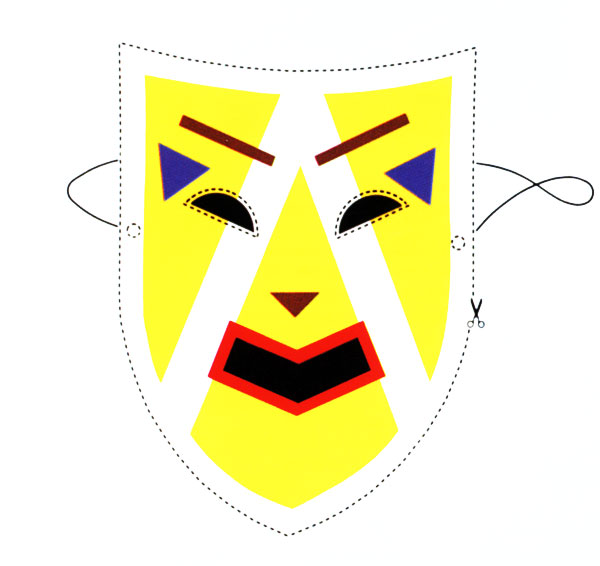
J.J. Jeczalik is a founder member of the Art of Noise and played an important role in many early Trevor Horn and ZTT projects as the creative programmer of the Fairlight CMI, the digital sampling synthesiser that transformed the way much music was made in the early 1980s.
As part of our celebration of the 30th Anniversary of ZTT Records, we recently caught up with JJ and spoke at length about his time at ZTT and the Art of Noise. I started by reminding him that we’d met before a few months earlier…
SDE: You might remember me from that evening at the Southbank [19:Eighties] I accosted you with an Into Battle cassette single in hand…
J.J. Jeczalik: And it wasn’t so much the cassette – it was just in such beautiful condition.
SDE: That was a very good evening, actually.
JJ: I thought it was brilliant. I loved it. Actually brought a tear to my eye and there was one of the tunes in the bit that Anne had arranged for I wrote and then she turned it into the most beautiful chords and it was – it just – it got me.
SDE: It was fantastic. So did you all go out for a big booze up afterwards?
JJ: Yeah, well, it’s the first time we’d been together. Trevor [Horn] was there as well and he bumped into Gary. I didn’t see him but basically it was the first time we’d all been assembled in the same building since about ’80 something… ’83 or ’84, maybe?
SDE: Well, maybe we’ll just start right at the beginning. How did you come to work with Trevor Horn in the very early days – pre-Art of Noise.
JJ: Yeah, going back a bit. Let me think now. Okay, so I was living in London with some friends up in Highgate and they used to go and see a band in Crouch End called Landscape who were what they loosely called themselves Fusion Jazz Rock and the drummer was a guy called Richard Burgess or Richard James Burgess. He was doing a lot of sessions and I ended up – well, they call it the technician nowadays don’t they, but I was humping his gear around as his roadie and he was doing sessions for Geoff [Downes] and Trevor [Horn] as The Buggles on the recordings after Video Killed the Radio Star. One thing led to another and they offered me a job working for Geoff, and the next thing I know they’re in the band called Yes who I’ve got to say I hadn’t really ever heard. And Geoff’s building a huge keyboard rig, that I’m building with him for the album Drama, as it then was, and then a tour. And in amongst the kit that Geoff had, he brought a Fairlight which was pretty much one of the very first ten that were imported – I think [Peter] Gabriel had one at the time, there weren’t many of them. And the manual was like four pages long, you know “press button, good luck…”, which in a way was good.
And so we worked on the Drama album, then went on tour, came back, and I realised that the Fairlight was the way forward and said to Geoff, “When you’re not using it, can I go out and programme it?” He went, “Yeah,” and then push came to shove Gary Langan was working with Trevor Horn at the time, as his engineer, down in Sarm Studios and he said, “Trevor’s thinking of buying a Fairlight or a Synclavier go and talk to him.” [I] persuaded him to buy a Fairlight – thought we’d have a lot more fun. So, anyway Trevor said, “Look, I’m not interested in learning how to operate this thing, take it away, get into it, and when I phone you can work for me or you can hire yourself out,” so off we went. And I’m getting calls from Trevor, can you come to the studio next week, and started working with him on things like [Malcolm McClaren’s] Duck Rock, ABC, Dollar all these things.
SDE: But how did you get interested in the whole technology side of music in the first place? Was that always an ambition of yours?
JJ: Not at all, no, I’ve got a degree in geography. So I hadn’t got music on the horizon at all, it was just with meeting the guys and going and seeing Landscape and enjoying that. Actually what happened was – Richard Burgess, the drummer, he deserves a bit of credit here, I think – because I said to him I was quite interested in being a drummer and he said “You should learn to type. It’s all going to be about computers”. I went, “Oh, okay.” so I went and learned to type, but that changed the focus somewhat and then when Geoff latterly bought the Fairlight, I thought, right, this is the way to go. It’s here, this is it.
SDE: Am I correct in saying you can play a musical instrument? You’re known as this kind of ‘non-musician’ but…
JJ: One or two digits. I have quite a good ear, I think. And for example quite a lot of the tunes that we used to play for the Art of Noise tracks, I would put into the sequencer and fiddle with them until I was happy with what I was doing, but I had no sense of what key it was – it just sounded good. And that was the beginning and the end of it as far as I was concerned. That’s what really pleasantly surprised me at the QEH [Queen Elizabeth Hall 19:Eighties concert] was there was this little thing that I’d done, about four or five bar little voice thing that was turned into these most beautiful chords and interpreted in this way. And so, yeah, no, I would not absolutely not put myself down as a musician, but over the years I’ve got a very acute sense of… I think of sound as shapes, so I’m always thinking about shapes and how they sound and all that. I’ve got a pretty good ear, so, no, I don’t play, absolutely.
SDE: So how hard was it to programme the Fairlight, then? It sounds quite tedious. You must have presumably loved it otherwise you wouldn’t have done it?
JJ: I absolutely loved it. I spent hundreds and hundreds of hours, it’s that old thing of ‘the 10,000 hours’. I don’t know how many hours I’ve spent. But I lived in a room in a house in Highgate and I was basically recording anything and everything and sampling it. And I was just building a library. I did a session with Paul McCartney once and they got a single trombone note, sampled it in Fairlight and he started playing chords. And he said, “Well, that doesn’t sound like the horn section,” and I went, “No, that’s because you’re playing multiple samples of one sample and it’s looping and it’s not great and that’s all it is.” And I suddenly realised that if you’re going to get someone playing trombone and you want a horn section, you get the best horn section and you get an arranger. I went then off and started thinking of trying to find weird and wonderful things that people wouldn’t normally have. And so when I’d got to Trevor he’d say, “Come in.” He’d say, “I need something in here, what have you got?” And I’d just sort of start playing all this stuff. He’d go, “That’s a good bit, we’ll have that.”
But in answer to your question about whether it was easy to programme, it was all a bit mysterious really. There were bits of it that I never got my head round at all. But sampling was just playing with it, playing with it, playing with it….. for example, the default sample time was under half a second and doubled the time and halved the bandwidth because I thought I’ve just got to get some more time out of this thing. And that led to of course sampling the Art of Noise drum sound and that led to it sounding like it did – it sounded dreadful. Actually it worked, that was it. So I was always trying to get it to work. For me, it was always how can you get this damn thing to work. The sample time was so short it was ridiculous.
SDE: And you mentioned “Duck Rock”, now that is always mentioned as the kind of catalyst, the thing that kind of kicked off the Art of Noise. Is that effectively the case? What were your memories of that particular record?
JJ: I was in and out quite a bit on that and Trevor was going, “These guys are doing this scratching, you’ve got to come in, blah, blah, blah, blah, blah.” And I was chatting to Gary [Langan] about it and he said it’s amazing what we’re doing. He said, “We should do something in the Fairlight.” So we were talking about that and I think the key thing was that it was Malcolm McLaren’s attitude that was the key which was “why not, boys? Why can’t you do that?” For example, he said, “Can we put this bit of track in here,” and Gary going, “Well, you can’t do that, it’s on another 24 track machine,” you know in those days they were, you know, a yard by a yard, weighed a ton. And eventually Malcolm managed to persuade him to get an extra machine in, and it worked. And so I think certainly Gary and I took that with us and just threw everything at the Fairlight and go, why the hell not? And then moved into that thing – I don’t know where I picked it up, may have picked it up from Malcolm, where being boring was the biggest crime on the planet. You had to provoke, you know, and the notion being that if you provoke enough people if 50% of the planet like it then you’re in business. I think the legacy was “why not?” and “don’t be boring”.
SDE: And how did this dynamic between Gary and yourself and Anne [Dudley] work? Were you really good friends, were you just having a lot of fun in the studio together?
JJ: Yeah, I mean Gary and I started it all late one night after a Yes session when he’d got Alan White’s drum sound. And we did this thing overnight basically which became Beatbox I suppose, I can’t even remember. And Gary played it Trevor and he said you need to get Anne in to make it slightly more melodic and pleasant sounding! Because what we were doing was quite aggressive actually. It sounded very sharp and quite angular. And of course well, we were meeting regularly in sessions to Trevor and it was a working relationship, but we all got on well together because I think Anne’s a great keyboard player / arranger, Gary’s a great engineer and allegedly I was a bit of a whizz on the Fairlight. And really, in truth, I didn’t really know what I was doing [laughs]. But Gary saved the day many times getting it to sound really good, [whereas] in other sessions and we’d do the same sort of thing and the engineer had no idea what to do.
SDE: So did it feel like a little bit of a hobby at that point?
JJ: Well, hobby is perhaps the wrong word, but we were all doing lots of different things. And so when we did get together to do a session we all came in with different attitudes and views and stuff. And Gary and I would basically start all the rhythm track and create what I used to call the atmosphere. And then Anne would come in and maybe play some piano or keyboards on it, and what happened was – with the benefit of hindsight – was all the stuff that Gary and I were doing sounded so terrible that when Anne put her real piano on and keyboards it sounded incredible because the contrast sonically was just amazing. So, yeah, I mean it would be fair to say that in the main Gary and I started things, but with Moments In Love it was all four of us – me, Gary Anne and Trevor were all in the studio together. It was always the Fairlight. The Fairlight was always there. I was always there. Gary pretty much was always there. And then Trevor and Anne came and went. Because Gary and I used to sit there and just giggle most of the time and the other two found it a bit annoying [laughs]. We were just having a hoot.
SDE: So what was a typical day for you then, like say ’83 to ’84, that era?
JJ: A typical day would be I’d come off of a session for something else. I might’ve got a sound or two that I’d borrowed and we’d get together… I mean take Moments of Love for example, Anne gave me an orchestral sample on a cassette – I mean we were not interested in hi-fi at all, not an issue – and I sampled it, tidied it up overnight, came in in the morning, she said, “How’s that sample?”. I’d been playing with it and it was a mono sample and I’d literally turned everything on, plugged it all in and I went, “Oh, I’ve got this,” and went ‘bum, bum, bum, bum’. She said, “Okay, that’s brilliant.” And little did I realise that that – what had dripped out of my fingers was the tune and I chose those notes when I was playing with it because that’s where it sounded best from a sonic point of view. And she said, “Okay let’s record that.” Then you put the eighth note pulses in, what can we use, there’s the voice from the Fairlight library, made that nice and smooth. And then someone said let’s make it like [10cc‘s] I’m Not in Love and we decided to make it the most boring record possible following Malcolm’s thing of don’t be boring, or f you’re going to be boring be really boring. And then we got into turning it into a nine bar loop which gave us that bar to build all the funny weird stuff and off we went. So Gary and I would then programme that, sort it out, see what happened. Hopefully then they’d come back and we’d play it to them, then they’d come in and add some bits and pieces, then we’d muck about. And then basically by the end of the day we’d do a mix.
SDE: Would you be doing other sessions at the same time?
JJ: Oh, yeah. The next day we would all be off doing other stuff. And so it was very spontaneous, where there was no deadline other than we wanted to finish what it was that day.
SDE: Well, I was going to ask you about deadlines. Was there any stress, like “we’ve got to put an album out”?
JJ: No, not at all. I mean what happened was Gary and I had mucked around doing some tracks and gave a cassette to Trevor who said, “Get Anne in, blah, blah, blah,” and we mucked around and did that. He took the cassette to Chris Blackwell because ZTT was being started there and that was going to be released through Island Records at Basing Street Studios and what happened was – I vividly remember – I parked my car in Windsor car park and just come back from shopping, got in, turned the radio on and there’s Paul Gambaccini going, “And now number one in the black American urban dance charts: Art of Noise.” And my girlfriend at the time said, “That’s your track, isn’t it?” I went, “Oh, god, so it is.” We didn’t even know it was out. We were just creating bits of atmosphere. Some were short, some were long, and just chucking them out there. And so there was no sense – in the early days certainly – of anything other than creating a bit of atmosphere and having a bit of fun.
SDE: And then what would happen – Paul Morley and Trevor Horn would go off and shape something in the form of a release and put it out?
JJ: Yeah, for example, Paul’s input on Moments of Love was we created this long track, we had the backing track and all that sort of business and Paul came in and said, “Can I have a cassette,” and he came back and next day and he said, “I think you should call it Moments in Love” “Okay, fine, let’s do that.” And so he gave it a title. We were just chucking this stuff out there, and he would give it a name and create a focus for it and on occasions we would go back and then work on that and go, “Okay, that gives us another entry detail into that track which gives us another avenue, now we’ve got the name for it, it gives it a bit of context.”
SDE: How important do you think Paul Morley’s contribution was?
JJ: At QEH [Queen Elizabeth Hall, 19 Eighties event] I said to him that I had overlooked his contribution back in the eighties and I wanted to say that I really valued it and we couldn’t have done it without him. And he gave me a big hug and said, thank you very much. Because I didn’t get it at the time, but actually his input was not in the true musical sense, but it was, because it gave us another angle to work on. Moments of Love, I don’t know what that would’ve been without his idea for a title. Who knows.
SDE: So when the singles started coming out, were you hoping to have a hit or was that just a big surprise when Close (To The Edit) went into the top ten?
JJ: I think it was pretty much a surprise because all of us were doing loads and loads of other stuff and so it was a bit of a panic when people were saying can we have a video, and do Top of the Pops, like, oh my god, right, better get some time together, let’s go and do a rehearsal, yada, yada, yada… So it was all a bit ad hoc.
SDE: So the one proper album that was released in the ZTT era – Who’s Afraid Of The Art Of Noise – how much influence did you have in terms of what was actually on the album?
JJ: As I remember it, I think that Trevor and Paul pretty much did the running order. I do remember we listened back and said, you know, would it be better if that went there and that went there. But basically they kind of did that packaging, and I mean that in terms of assembling all the various tracks in a sensible order. And in those days it was vinyl so you had side one and side two and there was all that thought about how you – people forget, you have to balance the sides in terms of time. That was always an issue. And, yeah, in the main, in those instances we knew everything, we saw everything and we talked about everything, but I’ve got to say, for me, I thought what they did was great and so it was like I’m glad I didn’t have to do all that. That’s yet another thing to get your head round.
SDE: Towards the end of the ZTT-era you, Anne and Gary famously walked out just before the live showcase at the Ambassadors Theatres in London.
JJ: Yeah.
SDE: What was that all about, what happened there?
JJ: Well, I don’t know what the official line is…
SDE: Exactly. I think after all these years, maybe we could get some clarity on that (laughs)
JJ: It would be fair to say that by then the Art of Noise was a band, it had members. We were writers, we were recording and so it was an entity, even though it was a bit of a squidgy sort of amorphous, unusual grouping with no leader, no lead singer. Simply put, we found we were out of contract. Every contract had an option period at the end of it and it was incumbent upon the rights holder to go okay, we’re extending the option, which they didn’t do. So basically when they said we’ll do this show, we sat there and went, hang on, we’re not contracted to the record company anymore.
SDE: When you moved to China Records, how did things change?
JJ: They changed because we were a band and we spent a lot of time working together. Whereas before at ZTT it was a bit more ad hoc; “when can we get together”, “Are you free next week”, “I’ve got this idea”, sort of thing. It was a lot more formalised, let’s say.
SDE: Were you still doing kind of session work?
JJ: Yeah.
SDE: Presumably you were no longer doing any session stuff for Trevor Horn – did you miss that, that aspect of it?
JJ: No, because – well, no and yes. No, because we were busy doing the Art of Noise. As a band we were doing lots of other stuff like film music and adverts – that sort of business. But the contrast was that in that China period things sort of – not closed down – but became a bit more focused on what we were doing on the notion of the band and records. Whereas ZTT was lots of stuff going on, I mean I was helping with Propaganda, programming for Frankie… you know, every day I’d get a call and it would be something different. And I suppose what I missed about that was the variety and the craziness because it was, in the nicest possible way, it was absolutely mad. Because you didn’t know what was going on next, and from my point of view, you’d turn up and it was just always refreshing, interesting and a lot of fun. It was quite stressful at times because we spent three months working on Relax, and so that had all gone.
SDE: This was the period where you kind of dropped the whole anonymity thing. I’ve seen lots of clips of you and Anne being interviewed in New York or wherever. Did you enjoy that aspect of it – being a bit of a rock and roll star?
JJ: It was entertaining. I enjoyed doing it. Little did one know that these things would come back to haunt you.
SDE: On YouTube?
JJ: Exactly.
SDE: Do you know if there’s any plans to reissue those China albums?
JJ: Well, I don’t know and it’s interesting that – I mean I’ve got some great stuff that we did there, actually one of my favourite standout tracks – as they call them nowadays – is Paranoimia and I just absolutely loved it. I don’t know. Clearly ZTT have got this guy, Ian Peel, and then there’s Salvo Records, yada, yada, yada. There’s a lot of people who go there’s some stuff here that people should hear, let’s bundle it, let’s put it together and let’s do some nice packaging and make it something that you want to hold. Because I think everybody agreed that back in the day when you had a twelve-inch album cover and you had the gatefold, you had a bit of art, you know. They try pretty hard to make the CD versions that are coming out now pleasant and pleasurable to have in your hand.
So not happening at China and I don’t know why. Genuinely don’t know. Maybe we need to start an underground movement here to…Come on! Get this going!
I think it would be great and we did – there was some good stuff that we did there and it would be great. People forget, you know, we pretty much relaunched Tom [Jones]’s career for him. He’s gone on to bigger and better things and that was great and it would be great to go back and listen to some of the demos that we did for that, you know.
SDE: The ZTT-era it’s kind of defined to a certain extent by loads of remixing and eight minute versions of Two Tribes etc. From your point of view, especially when you’re working as part of the Art of Noise, did you see all that remixing and all that endless reworking as marketing or just enjoyable musical excursions and diversions?
JJ: It was huge amounts of fun. And it meant for me that I could grab any number of new bits and pieces of scaffolding that were falling off tracks. It meant that each day was a challenge, it was different. It was very exciting. It never occurred to me about the marketing side of it. As far as I was concerned I had to get my equipment in there, I had to be there, hope to god it worked and get on with it and try and create something that was new. I loved dismantling all those tracks, it was just a lot of fun. Because the technology was available to dissect all this stuff and rebuild it. That hadn’t really happened before. So, yeah, no thought to the marketing aspect at all.
SDE: You mentioned Relax and Frankie Goes to Hollywood. How was it working on those tracks and the Welcome to the Pleasuredome album? How much time did you spend on that project?
JJ: Well, initially, when ZTT signed Frankie, Gary was working on some other stuff, engineering, and I started working closely with Trevor. So of the original team, me and Gary, I was the one that was left. And well, Relax hopefully would be turning into a TV programme soon. We all got together last year and they’re doing a pilot and we’re hoping the BBC will take up. But we basically spent three months working on that, started off with the band then went to the Manor Studios in Oxfordshire with the band playing there. Then we ended up in rehearsals, everywhere I was taking my Fairlight with me, collecting little bits. And then Ian Dury’s Blockheads got involved.
SDE: Yeah, they did an early version didn’t they?
JJ: Backing track version of that. And on the apocryphal night it wasn’t going terribly well. It wasn’t going terribly well [laughs] and Steve Lipson was in then, engineering. Andy Richards was playing keyboards and I had my Fairlight and we were upstairs in the studio in Sarm 1 and Trevor said, “Yeah, come on, wipe this, I’m going to go home. Wipe it and we’ll just start again.” And we didn’t wipe it, we basically started plundering all the bits and pieces that we’d already got. I remember saying to the guys, “Why don’t we just groove around a bit?” And we put an eight bar loop together – we’d already had the eighth notes piano, Trevor and I had worked that out before, that was pretty much it. And so cranked the volume up and off we went and then Steve Lipson said, “Well, I may as well get my guitar out,” and he’s a wicked guitarist. I didn’t know that. And he’s playing this and Andy’s grooving around and I’ve got the piano and the ‘BOW BOW BOW’ on the Fairlight. And we’re having a fantastic time, I mean it was just – we just knew, we just knew instantly that it had a groove to it, it was just fantastic. And Trevor came back, he goes, “What’s going on?” And I go, “Nothing!” [laughs]. He says “No, no, that’s it, you’ve got it, it’s fantastic.” And I remember him sitting down, he had his Linn Drum [machine] and he programmed the arrangement and we recorded it, the band came in and there was a sticky moment where Trevor said, “We’ve changed it again, again, again,” and they put it on and Steve turned up the volume and the guys started dancing and they said, “We love it.” Did the vocals and it was pretty much done in less than a day. But prior to that there had been all this work and what happened was that for me I’d been able to collect lots of bits of samples. And so I had an armoury of stuff. So I was just flying things at it all the time, “that’s not good”, “Ah, that’s brilliant”. So it was always just throwing things at this – Andy would do something and Steve would play guitar. And so eventually you could say that recording the whole thing took about four hours, but that was the very tip of the iceberg, because a huge amount of work went on before. I knew it was going to be an enormous record.
It was one of those things, someone once said when you’re kind of getting in those creative sessions it just drips out of the end of your fingers and you’ve got no idea what’s going on. There’s some sort of energetic connection, whatever it is, who knows? And it was all just – as they used to say in the seventies and sixties – really happening, man.
SDE: Did you ever perform with Frankie on stage?
JJ: Yes, I did. We did Live on The Tube. Andy was playing keyboards, I was playing Fairlight, Trevor was playing, Steve Lipson was playing guitar, Luis Jardim was doing percussion, so we had a band then. So, yeah, we did.
SDE: It must’ve been a bit nerve-wracking playing live when you’re relying on Fairlights and kind of technology.
JJ: Well, we rehearsed like hell. Basically I remember very well we went into rehearsal and we made a mix tape. Trevor came in the next day and gave everyone a complete bollocking. He said, “This is just not good enough. We’re going out on national television, this is not good enough. Get your shit together, learn, practice, practice, practice.” And by the time we got it together it was really good. So it was nerve-wracking, yeah, but I had limited myself to doing some bits that I knew I could do. Like playing golf, you have to play the shot you know you can play, rather than go, “I will bend the ball here, bounce it there, curve it there”. I just hit a straight shot.
SDE: Another record you worked on which is a bit of a favourite of mine is Opportunities, the Pet Shop Boys. How did that come about?
JJ: I was being managed by George Sinclair at the time and they were just starting and the office got a call. I’m sure I was some way down the list or possible producers.
SDE: You were probably the ‘go to’ man surely for the Fairlight at this point?
JJ: There were a couple of us doing Fairlight programming, that’s true, but producing that was the next step. I mean basically got a call and they said, “Do you want to produce this track?” I went, “Yeah.” And I knew they had something. It was very clear from listening to the demos that they had got something. It was that indefinable thing, when you listen to something and go, hmm, yeah, that’s great.
SDE: So you weren’t surprised when they later had the number one with West End Girls?
JJ: Not at all, no. Frustrated I didn’t get to work on it, but that’s, you know, that’s the way the business goes. And it was a great experience actually. And they went on to work with loads and loads of different people and I think that’s one of the reasons why they ended up being successful because they had lots of different input over the years and it’s very tempting sometimes for groups and bands and collections of people to get into a kind of tunnel, whereas the Pet Shop Boys just worked with so many diverse people – apart from all the obvious collaborations with producers and stuff, but it kept it fresh.
SDE: And what about Kate Bush? I read somewhere that you worked with Kate Bush, which track or which album was that then?
JJ: I was working with Geoff Downes at the time and we took his Fairlight in there and we did Sat in Your Lap. I love Kate, I mean [it was] just fantastic. Again, completely, completely different from ZTT and Trevor and all that. Copious amounts of tea, you know, Kate would brew up these vast teapots.
Thanks to J.J. Jeczalik who was talking to Paul Sinclair for SuperDeluxeEdition.
The 30th anniversary ZTT compilations are out now: Frankie Said Deluxe Edition, The Organisation of Pop and The Art of the 12″, Volume Three.

 Interview
Interview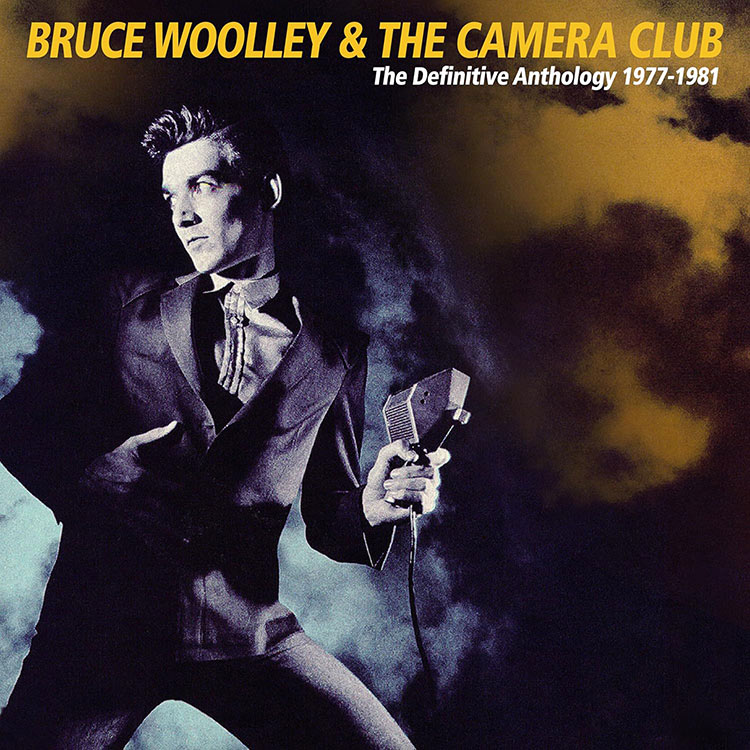
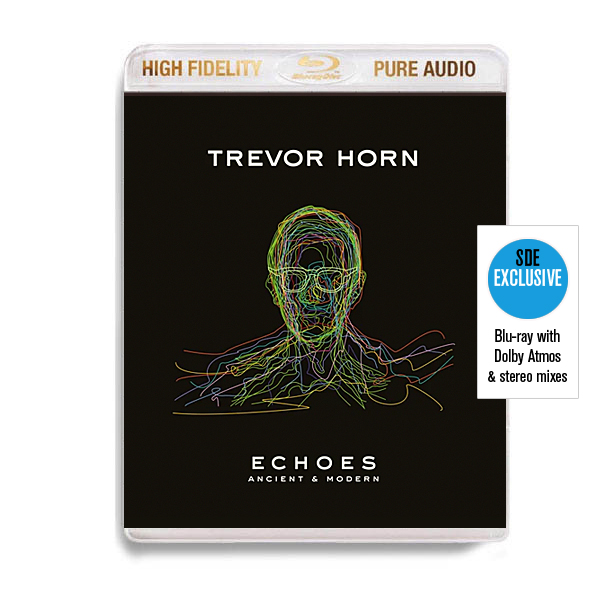
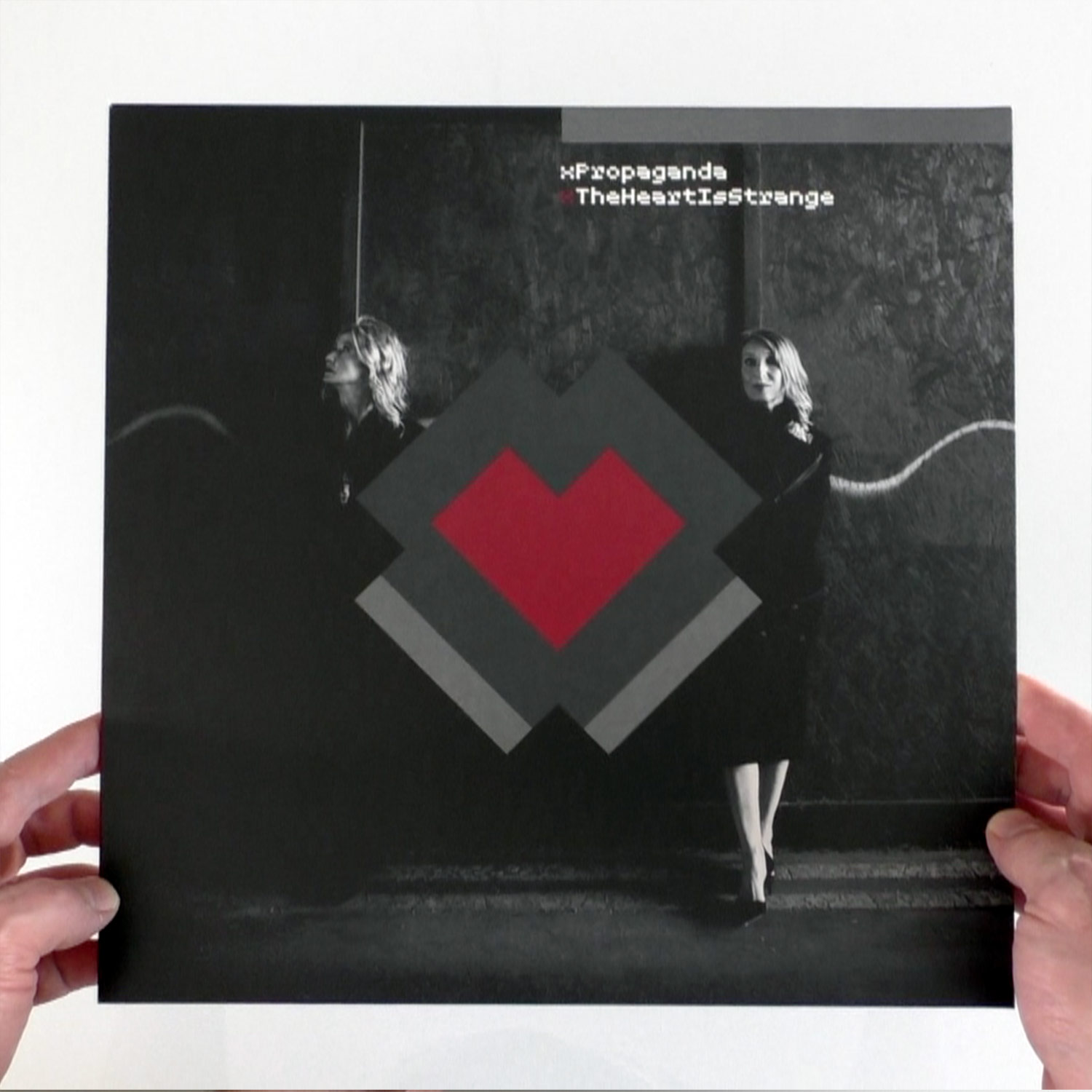
 SDEtv
SDEtv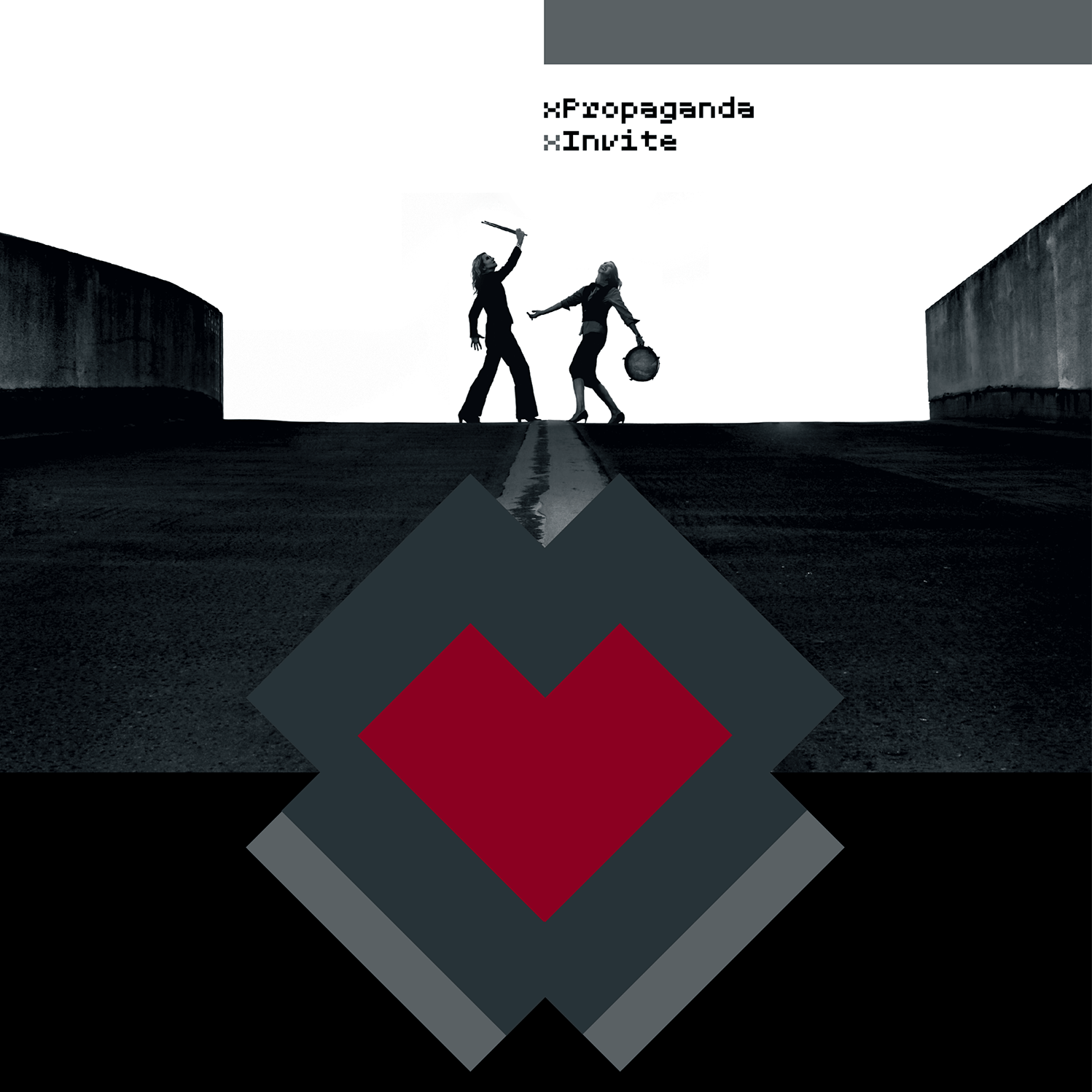
By Paul Sinclair
26